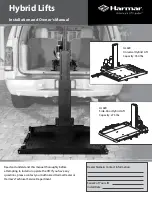
10
XLS80e Fire Alarm Control Panels
Honeywell, Issue 9
March 2007
3.2
Configuration Actions
The following configuration actions can be
performed:
a. An unconfigured panel can scan the loops
and learn what devices are installed, either
automatically or with manual user
intervention. Refer to
Section 3.6
.
b. Groups of devices on a configured panel can
be selected for deletion or change to a
different logical type. Refer to
Section 3.7
.
c. Individual devices can be added, removed
or changed manually. Refer to
Section 3.8
.
d. The panel zone and device text descriptions
can be edited. Refer to
Section 3.9
.
e. The relationship between input devices (e.g.
sensors, manual call points) and output
devices (e.g. sounders) can be configured.
This is done in the Control Matrix, which is
a table of inputs, outputs and relationships.
Refer to
Section 3.10
.
g. The status of devices (e.g. the sensitivity)
can be set to vary depending upon the time
of day. Refer to
Section 3.11
.
h. The panel clock can be adjusted. Refer to
Section 3.12
.
i. Various temporary and permanent
configuration options can be set. Refer to
Section 3.13
.
j. The panel can be configured to be part of a
network. Refer to
Section 3.14
.
k. Sounders or remote fire outputs can be
delayed. Refer to
Section 3.15
.
l. Virtual input and output points can be
configured. Refer to
Section 3.16
.
LOOP DEVICE CONFIGURATION
- Sections 3.6-3.8
TEXT EDITING
- Section 3.9
CONTROL MATRIX
- Section 3.10
TIME-OF-DAY
- Section 3.11
CLOCK SETTINGS
- Section 3.12
PANEL SETTINGS
- Section 3.13
NETWORKING
- Section 3.14
Z X C V B N M
Q W E R T Y U I O P
A S D F G H J K L
?
?
DELAYS
- Section 3.15
Certain options on non-configuration menus
also require the access level 3 or 3A passcodes.
These options are described in
Section 12
.
VIRTUAL POINT CONFIGURATION
- Section 3.16
















































